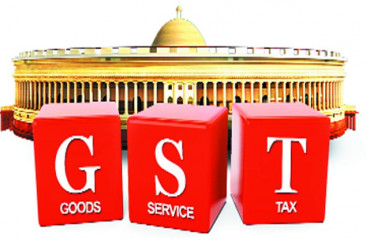
New Delhi: Central and state governments collected over ₹2 trillion in Goods and Services Taxes (GST) in May before adjusting for refunds, official data showed on Sunday, a 16% annual improvement that sustains the robust tax performance seen in the previous month.
New Delhi: Central and state governments collected over ₹2 trillion in Goods and Services Taxes (GST) in May before adjusting for refunds, official data showed on Sunday, a 16% annual improvement that sustains the robust tax performance seen in the previous month.
The collections in May also benefited from the strong 25% growth in gross receipt of Integrated GST or IGST—the type of GST levied on imported goods, showing strong import value growth at the beginning of the current financial year amid trade uncertainty.
In April too, IGST on imports had grown nearly 21% before refunds, compared with a 13.6% growth in March, prompting some experts to flag the possibility of dumping of goods into India by other countries as the Trump tariff announcement came in April.
Also read: Government drove capex in pre-election year as private sector held back
IGST accounted for about a fourth of gross GST revenue in May.
GST collections from domestic sales too witnessed a strong 13.7% growth in May, faster than the 10.1% nominal GDP growth the Central government has forecast, suggesting strong consumer sentiments.
Data also showed that industrialized states barring Gujarat, reported strong growth performance. While the largest state economy, Maharashtra, reported a 17% annual growth in GST revenue, Tamil Nadu reported a 25% jump, Karnataka 20% and Delhi 38%. Gujarat reported a muted 4% annual growth in May.
After adjusting for tax refunds, Centre and states collected ₹1.74 trillion in May, 20.4% more than the revenue collected in the same time a year ago. In the first two months of the current financial year, net GST revenue of Centre and states grew at an average of 14%, faster than the projected nominal GDP growth for the current year.
Signs of dumping?
After refunds, net domestic GST revenue grew at 9.7% in May, nearly the same as in April, but the net customs revenue in May— IGST and cess on imports—grew at a spectacular 73% in May, compared with an unimpressive 5.2% in the previous month.
Also read: Tax rate revamp on GST Council agenda; India to push FATF to grey list Pakistan
The growth in IGST revenue from imports and the fact that export refunds are not growing correspondingly, reflect the fact that import growth far outstrips export growth, explained Vivek Jalan, founder and partner at Tax Connect Advisory Services LLP. The taxes paid on goods and services used in the products that are exported are refunded to exporters to make shipments competitive, as per policy.
"This may be a result of Trump 2.0 in as much that countries are dumping their goods in India, as they are selling less in the US. It may be required that India too may have to reciprocate, or react with anti-dumping duties in the near future on a variety of products," said Jalan.
At the same time, sustained growth in the consumption tax revenue indicated positive consumer sentiments.
To boost demand for goods and services in the economy, the government had announced a tax cut for middle-income earners in this year's budget which was estimated to cost the exchequer ₹1 trillion by way of forgone income tax receipts.
Policymakers are also counting on above-normal monsoon, strong agriculture growth, growth supportive monetary policy and government capital expenditure to support economic growth this year.
M.S. Mani, partner indirect taxes, Deloitte India, said that tax collection in May which is better than the average monthly GST receipt in the last financial year, would provide significant fiscal headroom for the government.
After refunds, the Central government collected over ₹31,000 crore, while states collected over ₹38,500 crore. Cess on luxury goods, aerated drinks and tobacco yielded ₹12,400 crore in May.
